
Homeria, Cape Tulip: Planting, Growing, Care
Contents
The Moraea or Cape Tulip in a few words
- This is a hardy perennial bulb that produces beautiful stylised flowers in spring or summer
- Light and elegant, its fragrant flowering displays unusual colours in yellow, orange to salmon tones
- Not very hardy, it is perfectly suited to the Mediterranean coast
- It prefers light, well-drained but not overly rich soil in a sunny position
- In colder regions, it can easily be grown in pots and stored indoors during winter to protect it from frost
Our expert's word
The Homeria, sometimes nicknamed the “Cape Tulip”, is a South African bulbous plant, prized for its refined and fragrant spring or summer flowering. It blooms with lovely tulip-shaped flowers in warm yet soft hues, ranging from yellow to orange tones.
Being frost-tender, it is best planted directly in the ground only in mild climates, particularly along the Mediterranean coast, but elsewhere it thrives easily in pots that can be brought indoors during winter.
It thrives in a warm, sunny spot with light, well-drained soil.
It will add a luminous and exotic touch to rock gardens or enhance patios and balconies.
Discover this charming bulb full of character!
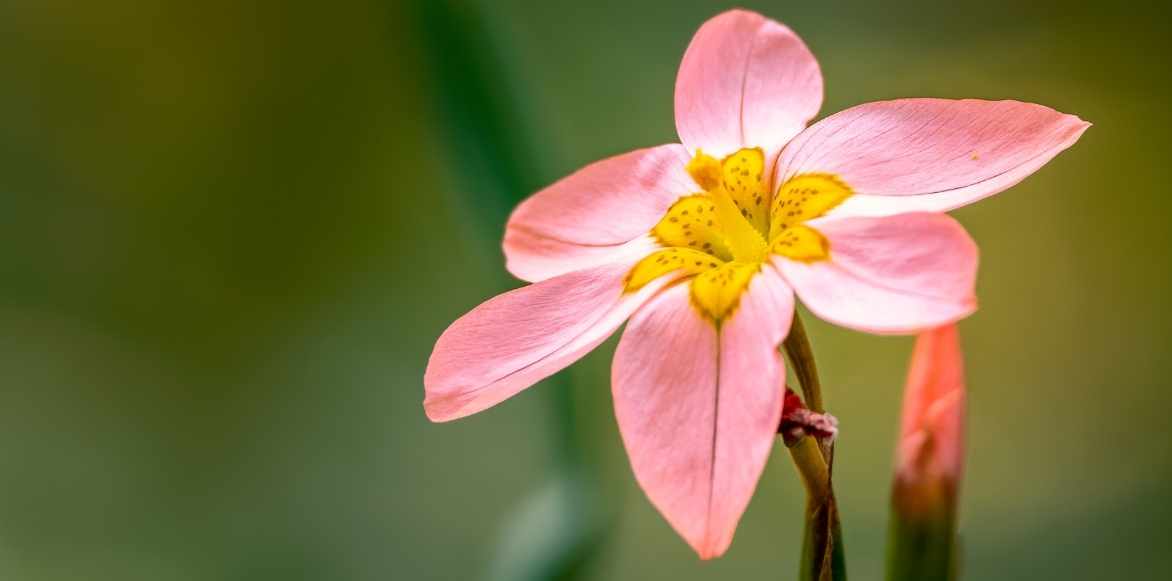
Cape Tulip
Description and botany
Botanical data
- Latin name Homeria
- Family Iridaceae
- Common name Cape Tulip
- Flowering March to July depending on the species
- Height 30 to 75 cm
- Exposure Sun
- Soil type light, rich, well-drained
- Hardiness -5 °C
The Homeria, sometimes nicknamed “Cape Tulip”, is a bulbous plant from the iris family, much like irises and corn lilies (Ixia) which it resembles. It originates from the Cape region in South Africa, where it grows on sandy and rocky slopes up to high altitudes, in plains and pastures.
Formerly classified in the genus Homeria, it now belongs to the Moraea genus which comprises 32 species, only a few of which are cultivated; Homeria ochroleuca (synonym Moreae ochroleuca), Homeria flaccida (syn. Moraea flaccida), H. collina, H. comptonii, H. elegans and H. lilicina, with pale mauve flowers, not to mention their hybrids.
This herbaceous plant develops from an underground storage organ in the form of a perennial corm. This is a sort of rounded, flattened bulb surrounded by a fibrous tunic. From this small bulb, about 2 cm in diameter, emerges an upright and slender clump that rises 40 to 75 cm when in flower. In our temperate regions, the clump thickens over time, returning faithfully each year.
The foliage consists of long, narrow, linear and ribbon-like deciduous leaves, of a bright green colour. The basal leaves measure from 20 cm up to 1 m long, envelop the flower stem at the base and are traversed by longitudinal veins. They emerge from the base and develop in a fan shape forming a beautiful, elegant clump, which will persist in winter only in mild climates. A few smaller, narrow sword-shaped leaves are present in the upper part of the stems. This slender foliage, folded in two, disappears completely in summer, marking a period of vegetative dormancy, to reappear in autumn and persist depending on the severity of winter. Some time after flowering, in early summer, the foliage dries up and the plant goes dormant.
Carried in twos or threes at the top of tall, rigid, slender and branched stems, sometimes slightly zigzagging, the flowers appear. Flowering occurs from March-April to July, depending on the species and climate, in the form of pretty, stylised flowers. Discreet but elegant, the inflorescences bloom into fragrant open cups measuring 3 to 7 cm in diameter, formed of 6 elongated petals arranged in a staggered pattern. They open wide under the sun to reveal their long, thick style furnished with stamens. Their shape is somewhat reminiscent of certain botanical tulips. They display rather unusual colours in a palette of generally fruity tones, ranging from yellow to orange, through melon, salmon, apricot, peach, or greenish-yellow. They are always brightened by a throat maculate with yellow or orange. With a translucent texture, the delicate petals reveal fine veins.
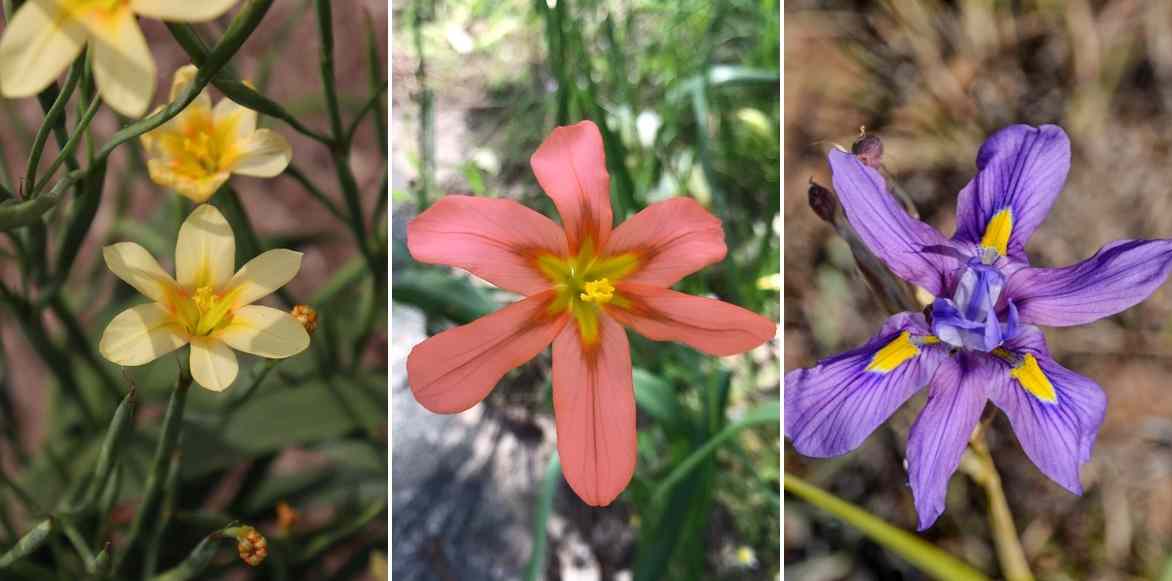
Homeria ochroleuca (© Vahe Martirosyan), Homeria flaccida and Moraea polystachya
This very elegant flowering is unfortunately short-lived, once open, each flower lasts only one to two days but the flowers follow one another for 4 to 6 weeks. They compensate for their brevity with their abundance and their pleasant musky fragrance.
Nectariferous, they are crowned with butterflies and bees that delight in their pollen and nectar.
The flowers turn into fruits, plump green capsules turning brown at ripeness, containing numerous small brown-coloured seeds.
Read also
Planting summer-flowering bulbsMain species and varieties
[product sku=”15562″ blog_description=”This Cape tulip which flowers in April, in the form of pretty pale yellow flowers with an orange centre, scented. It brings colour and fragrance to rockeries and flower beds.” template=”listing1″ /]
[product sku=”15561″ blog_description=”This species flowers from May to July depending on the climate in the form of tulips in orange or salmon pink. Ideal for brightening up the terrace or balcony during the fine days.” template=”listing1″ /]
Discover other Homeria
View all →Available in 1 sizes
Available in 1 sizes
Available in 1 sizes
Available in 1 sizes
Available in 1 sizes
Available in 1 sizes
Planting Homeria bulbs
Where to plant the Cape Tulip?
Native to Africa, Homeria is a not very hardy perennial best suited to open ground in Mediterranean climates with mild winters. The corm of the Cape Tulip perishes below -5°C. Being frost-tender, it should be grown in pots and stored frost-free elsewhere during winter. Drought-resistant in summer, this bulb is well-suited to Mediterranean coastal areas. However, it dislikes heavy, waterlogged soil which may cause the corm to rot during its dormancy period.
If your climate allows for outdoor cultivation, plant it in a sheltered spot or at the foot of a warm, sunny wall protected from strong winds. To prevent corm rot, ensure it’s grown in a light, free-draining substrate. A humus-rich, moderately fertile soil will work well. In heavy soil, planting in a rockery or raised mound is preferable.
Planted in small groups rather than singly, the Cape Tulip brightens rockeries and is ideal for adding elegance, colour and lightness to borders or perennial beds.
As the foliage yellows quickly after flowering, it’s best paired with plants that will take over during its summer dormancy, avoiding gaps in mid-summer displays.
When to plant Homeria?
Homeria bulbs should be planted in spring from March to May. In mild climates, they can be planted in autumn.
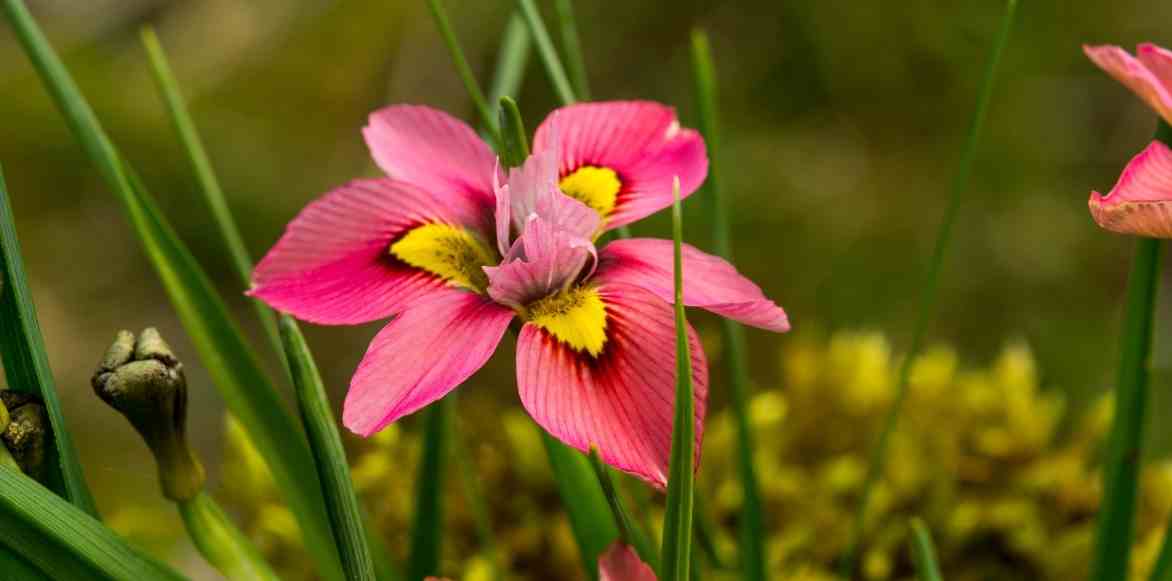
Homeria (Moraea) tricolor
How to plant Cape Tulip bulbs?
In open ground
Plant Cape Tulip bulbs in small groups of 10 for a natural look. I recommend avoiding large plantings as their flowering is brief and foliage withers quickly. Like most flowering bulbs, they need light, well-drained soil. If your soil is clay-based, be sure to add coarse sand or gravel to improve drainage.
- Loosen the soil well
- Using a bulb planter, dig holes
- Spread a layer of sand or gravel directly beneath the corms
- Plant corms 10cm deep, pointed end up, spaced 10-15cm apart
- Cover with soil and firm down
- Water
- Keep dry in summer
In pots
- Place a good drainage layer of clay pebbles, pumice or gravel in a pot at least 20-30cm in diameter and depth
- Plant 2-3 corms pointed end up in a mix of 50% compost and 50% river sand
- Cover with soil and firm down
- Water thoroughly
Care and maintenance
In the ground
Provide moderate watering during the leaf growth period. During flowering, increase watering: once a week during growth if the soil is very dry. Gradually reduce watering as the leaves dry and yellow to ensure bulb dormancy in dry substrate: the corms require a rest period after flowering to replenish their reserves. Keep the bulbs almost dry during their summer dormancy. Only cut back the foliage once it has completely dried out.
In borderline hardiness zones, protect the corms from cold by placing a thick layer of organic mulch over the stumps.
If you live in a cold climate region, dig up the corms in autumn to protect them from frost. Store them in a dry, airy, cool, frost-free location, safe from rodents. You can replant them in spring.
Dividing clumps every 4-5 years helps rejuvenate the plant.
Homeria is not prone to diseases or parasitic attacks.
In pots
Keep the substrate moist throughout the growing season but never allow water to stagnate in saucers: water once to three times a week.
Top-dress in spring with a little compost or potting soil.
When the foliage has completely yellowed, it’s time to stop watering and mulch the corms if the pot remains outdoors over winter. In cold regions, store the pot in a dry, cool, frost-free location.
Propagation
Dividing the corms is the simplest method to propagate the Cape Tulip. Carry out this process every 4 to 5 years during the dormancy period, once the flowering cycle has fully ended. They will flower after 2-3 years.
- Dig up the clump using a garden fork
- With a sharp knife, detach the small bulbils that have formed around the mother bulb
- Replant them in the garden in well-draining soil or in pots
- Water
Pair
The Cape Tulip is best planted in small groups in the middle of a rockery or to fill out a sunny flower bed. It brings elegance and dynamism to summer or spring compositions.
For an exotic touch, mix Homeria flaccida bulbs with summer-flowering perennials; such as Kniphofias, Cape Daisies (Osteospermum), crocosmias, Cannas, and other blooms in warm tones. They also pair well with gladioli.
Plant Homeria ochroleuca in sunny rockeries alongside simple flowers like snapdragons and wallflowers or small spring bulbs such as botanical tulips or daffodils that bloom at the same time.
It will also thrive alongside other plants native to South Africa, like the Cape Aster or Felicia, an undershrub covered all summer in extraordinary sky-blue daisies, or Gazania, another annual with brightly coloured daisy-like flowers. Accentuate the display with clumps of ornamental grasses like pennisetum, which has a more relaxed habit.
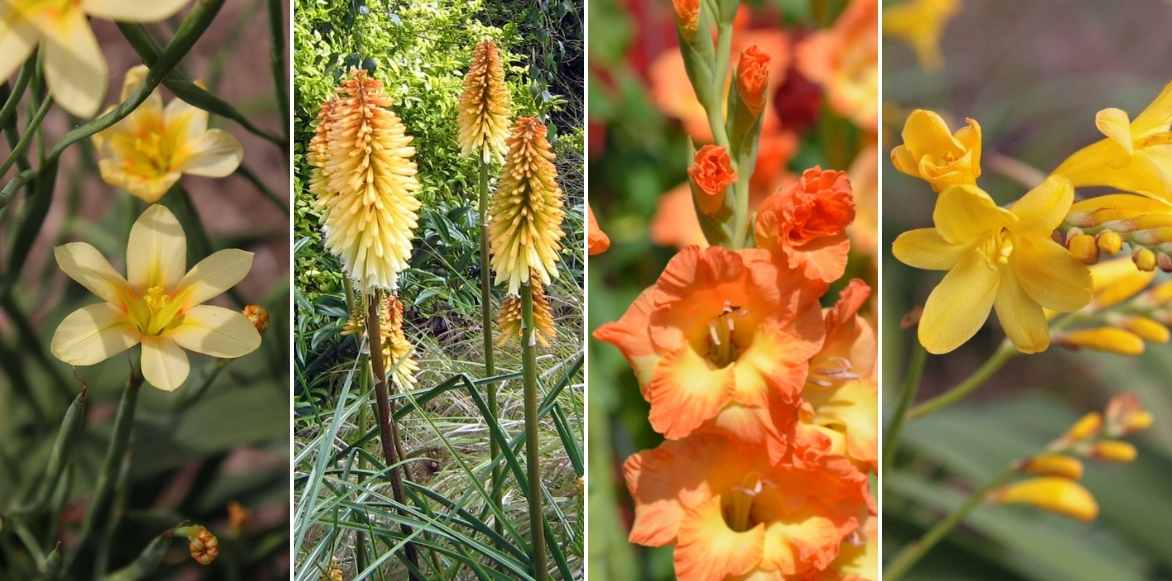
Homeria ochroleuca, Kniphofia, gladioli and Crocosmia crocosmiiflora ‘Sunglow’
Useful resources
Potted plants and watering: managing heatwaves during your absence
- Subscribe!
- Contents


































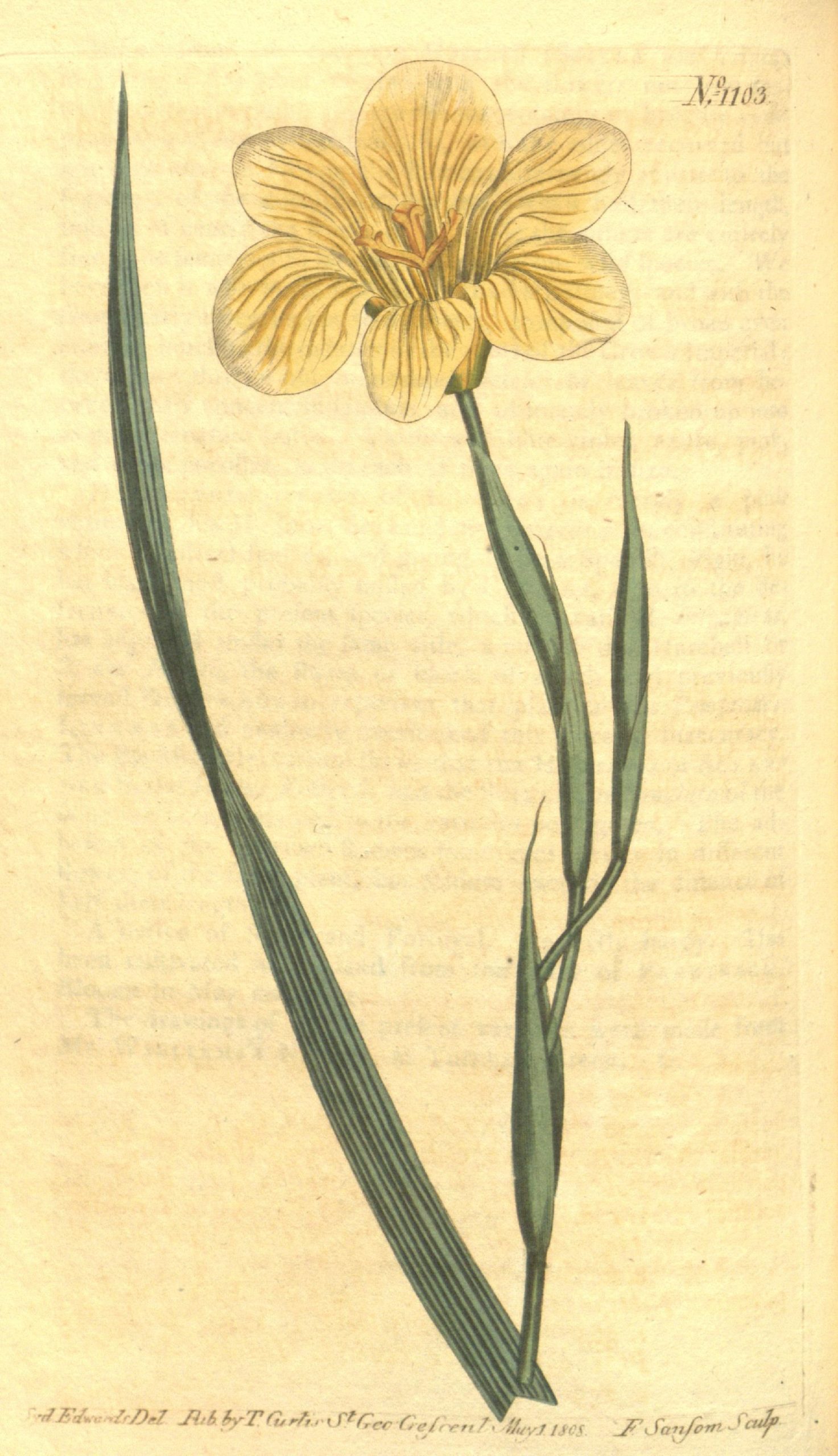
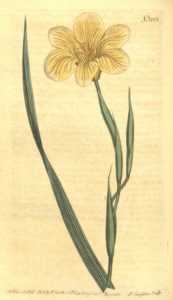
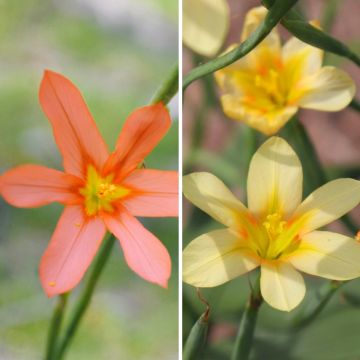
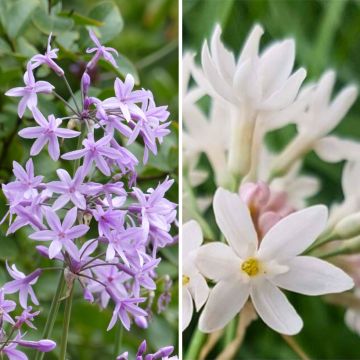
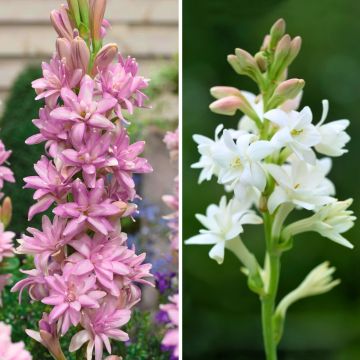
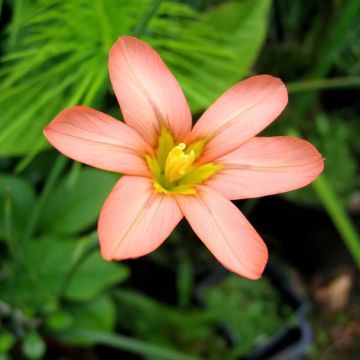
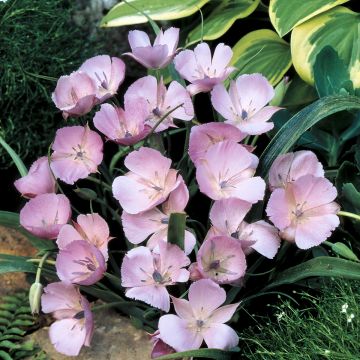
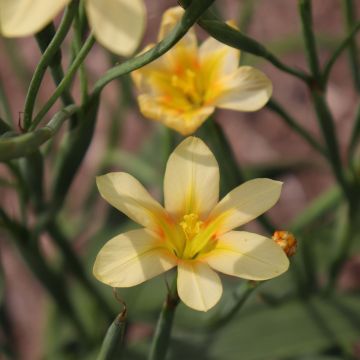
Comments